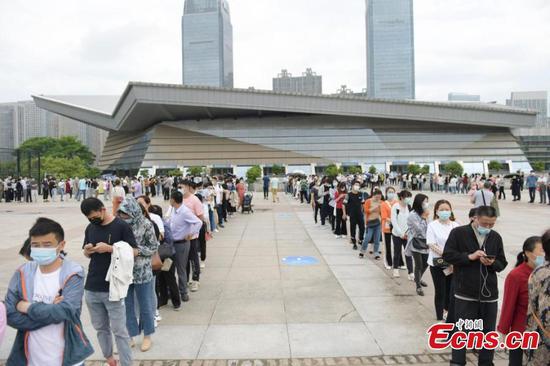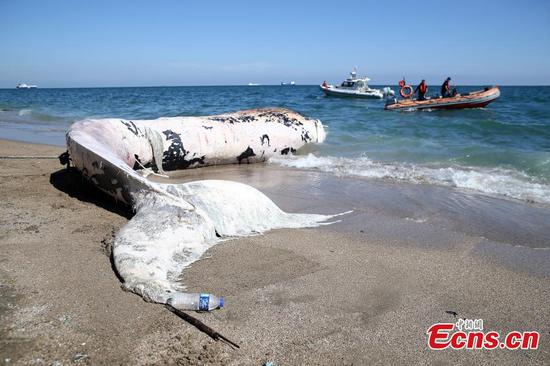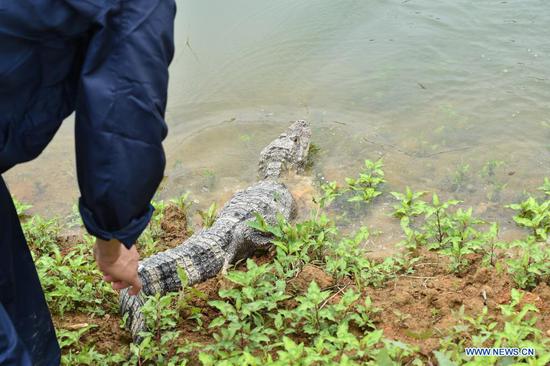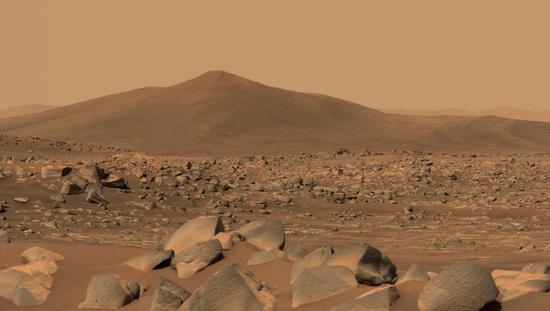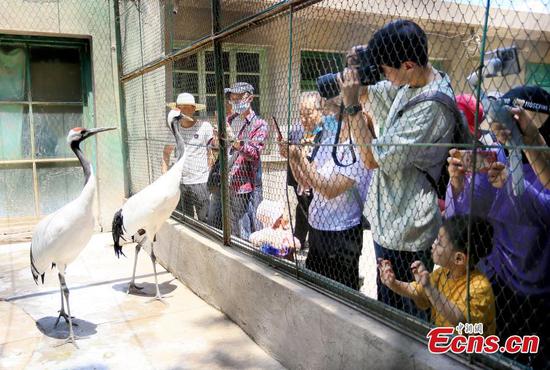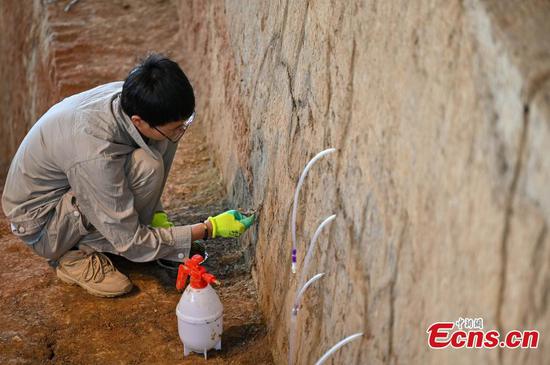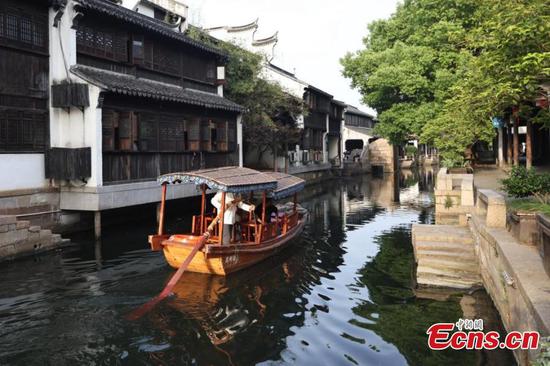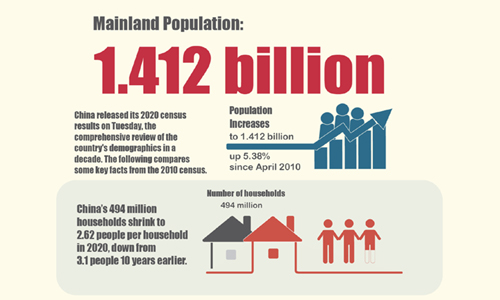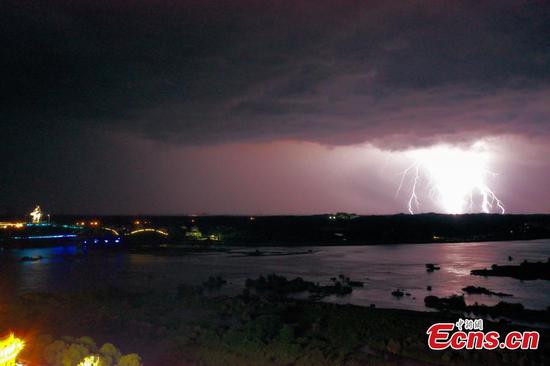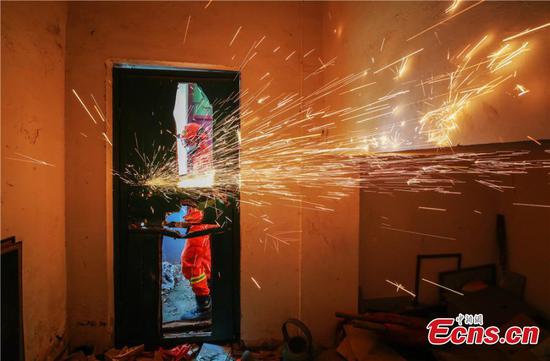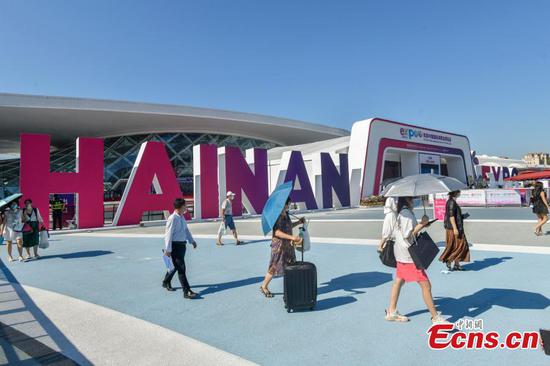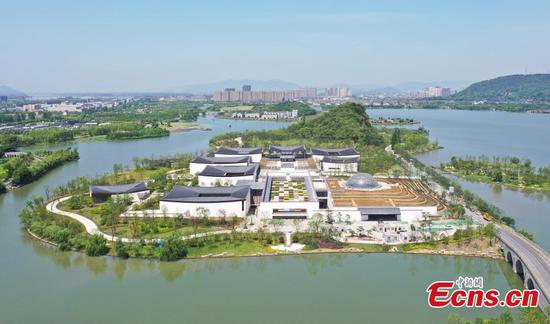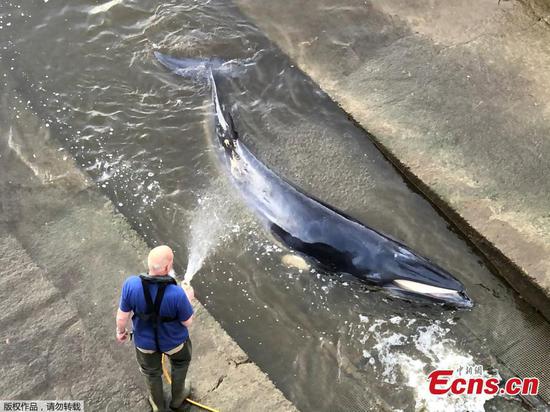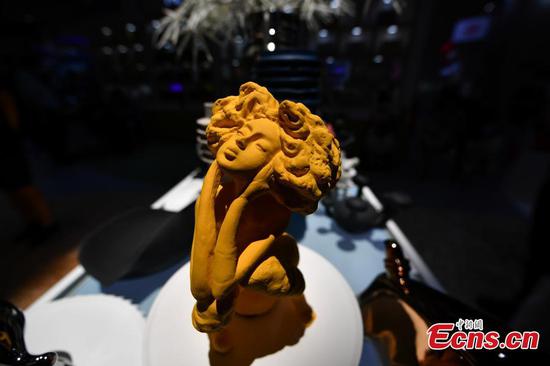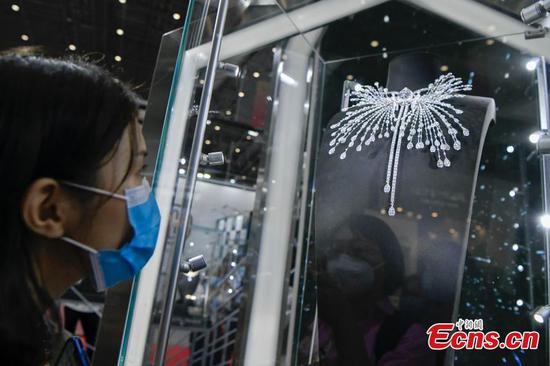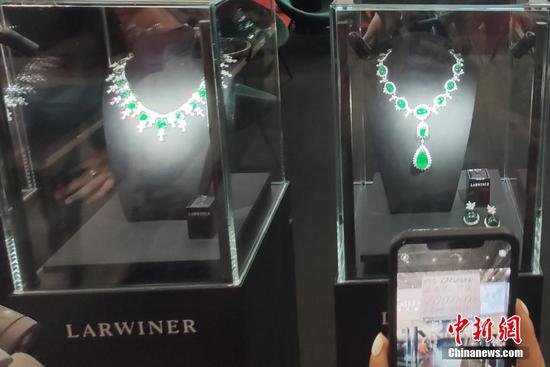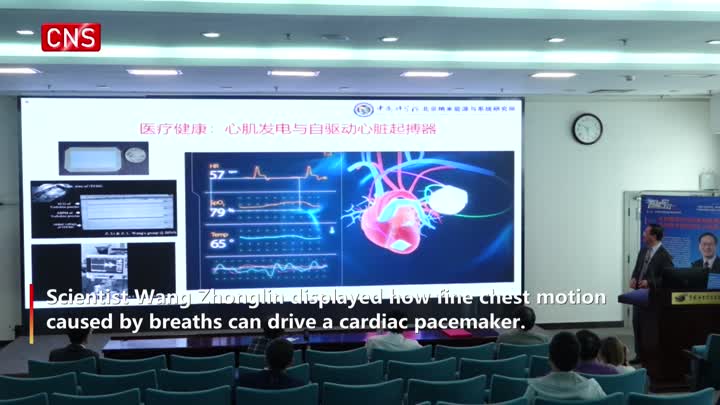
The combination of the Tianzhou 2 cargo spacecraft and the Long March-7 Y3 carrier rocket are seen at the launching area of the Wenchang Spacecraft Launch Site in South China's Hainan province, May 16, 2021. (Photo/Xinhua)
China's Tianzhou 2 cargo spacecraft and its carrier rocket - a Long March 7 - were moved to the launchpad on Sunday morning, undergoing final tests before their planned launch in the coming days, according to the China Manned Space Agency.
Preparation work before the launch has begun at the Wenchang Space Launch Center in the southernmost island province of Hainan, the agency said in a brief statement, without giving more details.
Tianzhou 2, the country's second cargo spaceship, is tasked with docking with the currently unmanned core module of China's Tiangong space station and then conducting autonomous refueling and resupply operations.
Its predecessor, Tianzhou 1, was China's biggest spacecraft when it entered service and was launched at the Wenchang launch center in April 2017.
It carried out several docking and in-orbit refueling maneuvers with the Tiangong II space laboratory in a low-Earth orbit from April to September that year, making China the third nation capable of in-orbit refueling, after the former Soviet Union and the United States.
A Tianzhou spacecraft is 10.6 meters long and has a diameter of 3.35 meters. Its maximum liftoff weight is 13.5 metric tons, enabling it to carry up to 6.5 tons of supplies, according to the China Academy of Space Technology, the spacecraft's developer.
This type of spacecraft is essential to China's space station program, which aims to put a three-part and approximately 70-ton station into operation before the end of 2022. It is responsible for refueling and resupplying the station.
The world's first operational cargo spacecraft, Progress 7K-TG, was developed and launched by the Soviet Union in 1978. This type of transport vehicle conducted 43 cargo flights before being retired in 1990.
More than 200 cargo vehicles have been sent to deliver supplies to space stations. Currently, four models are in service - China's Tianzhou, Russia's Progress-MS and the US' Cargo Dragon and Cygnus.










